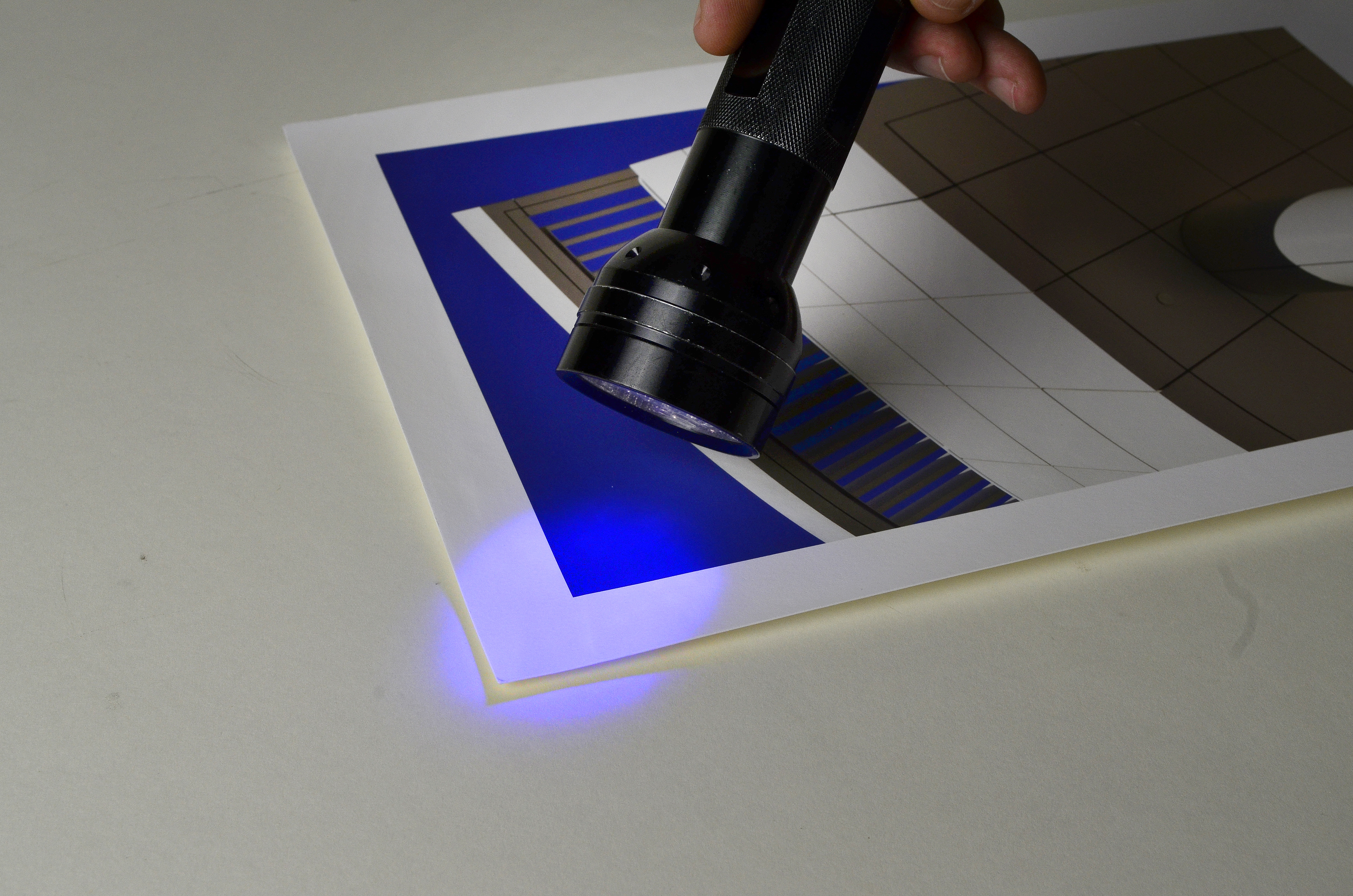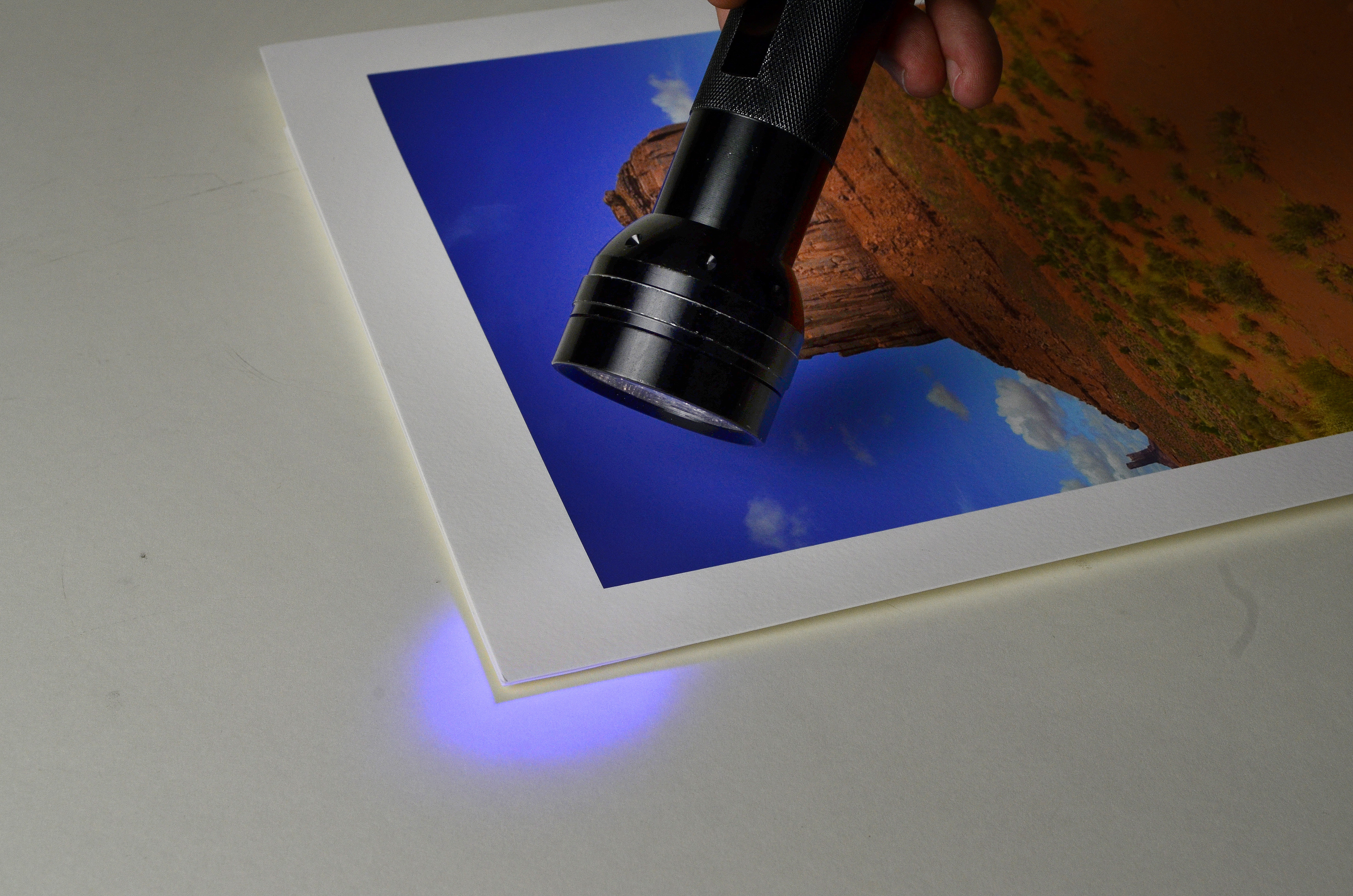

Many customers ask us, “What paper is going to give me the brightest white?” The easy answer is “The paper that contains the most optical brighteners.”


Since we don't use white ink in our inkjet printers, the brightest point in our images is going to be determined by the white point of the paper we use. A natural base paper without optical brighteners will have a yellowish or slight cream color vs. a paper with a lot of optical brighteners in it. Optical Brightening Agents are chemical dye additives that make the paper base appear brighter and bluer to our eyes when exposed to ultraviolet light. This has a definite effect on how our images look.
What is quite interesting is when someone makes a decision to use a paper with a lot of OBA's in it and then they mount the print in a frame containing an expensive UV coated glass called Museum Glass. This glass is specifically coated with a UV inhibitor which very drastically changes the entire color of a print containing OBA's. By using Museum Glass you've just taken away the very spectrum of light that was giving you the look and base color you wanted. Optical Brightening Agents aren't necessarily bad, but it is important to be aware of them as they can have an important impact on the overall impact of your print.